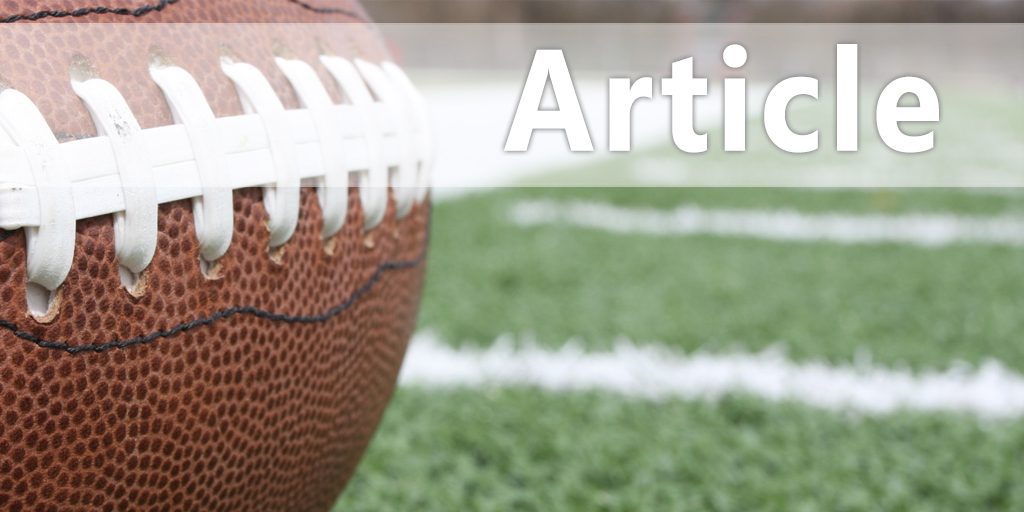| Fundamental Principles of Offensive Blocking
An effective blocking team is paramount to winning the championship. To be successful, you must be fundamentally sound in both the running and the passing game. To be fundamentally sound, you must realize what is required of the individual, and how that individual will go about mastering these requirements. First, you should acknowledge that blocking can be developed to a greater degree than any other phase of football because it is the most unnatural thing. It requires much more time because many more things are to be learned. Each player must develop a repertoire of techniques that will enable him to execute his blocks effectively in all situations. Personal goals must be set and a plan of action must be laid out. Repetition must be accepted as a way of life for a blocker, and success will be brought about only when solid confidence prevails. Concentration, self-discipline, willingness to pay the price, and personal pride geared to perfection must be evident at all times. If individual talent is intelligently and resourcefully applied through execution of techniques and coordinated in team offense, then success cannot be denied. Valuable Hints for Execution of Blocking Know the Offense All offensive linemen should:
In order that a player may anticipate what his opponent will do, he should look through the opponent's eyes and scout himself. He should take a good look in the mirror at himself. Execution of Technique: Execution is the key to success. It is one thing to have talent, but another to apply it correctly and get results. A thousand players with talent are sitting on the bench every Saturday.The execution of any block goes through four phases:
Secondary Assignment The most desirable trait in a football player is the desire to excel, plus a willingness to do more than is prescribed for him. A good competitor will strive to get that second block after completing his initial assignment. This type of player will not only supply his part of team leadership, he will also inspire team morale and command respect from the team and the opponents. His second effort will more than likely do one of three things:
Line Fundamentals Stance Pre-Set Stance
Guards, Tackles, Ends: Four-Point Stance-Goal Line and Short Yardage
Essentials of Good Execution
|
|
About the Author... |
|
|
| Larry Manfull coached at the high school and collegiate levels for more than 40 years. His career highlights include: • Inducted into the Football Hall of Fame at the University of North Dakota (2005) • Won a national championship at the University of North Dakota (1972) • Coach of the Year on the high school and college levels • Assistant Coach of the Year on the college level • Won several conference championships and bowl games • Coached 13 offensive linemen who played in the NFL and CFLAfter playing football for four years at Coe College in Cedar Rapids, Iowa, Manfull transferred to Wayne State University in Nebraska, where he worked as an undergraduate assistant in football. At Wayne State, he completed his BA, majoring in biology and physical education. He continued at Wayne State the following year as a graduate assistant in football, and, in 1964, earned his master's degree in secondary education. Manfull's first job was at Dubuque Senior High School in Iowa as an assistant football coach from 1964 to 1965. From Dubuque, he moved to California, working from 1965 to 1966 as head football coach at Hollister High School. In 1967, Manfull began his college coaching career as an offensive line coach at Dakota State University in Madison, South Dakota. A year later, he accepted a position as head football coach at Mayville State University. In 1969, he was hired as offensive line coach at the University of North Dakota, Grand Forks, where he continued coaching until 1977, when he moved back to California, working as offensive line coach for two more years at the University of Pacific. In 1980, he was hired as offensive line coach at California State, Fullerton. Sixteen years later, Manfull retired from Cal State. Although "retired," he continued to coach at Wahlert High School in Dubuque, Iowa, and at the University of Mary in Bismarck, North Dakota. Manfull again returned to California as offensive line coach at Mater Dei High School in Santa Ana and at Chapman University in Orange County. In 2007, Manfull decided that he'd had enough "retirement" coaching and retired for good in Mesquite, Nevada, where-when not writing this manual for his fellow coaches and linemen-he enjoys the slow-paced life of a small town. |


